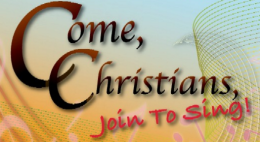Notes on the Notes – November 13, 2016
This week’s theme:
“A Tear in God’s Eye”
This week’s scripture readings:
Isaiah 65: 17-25, 2Thessalonians 3: 6-13, Luke 21: 5-19
This week’s music:
“Praise Our Maker” (VU #316)
“Praise our Maker, peoples of one family;
God is love, God is love!
Praise our Maker, peoples of one family;
God is love, God is love!
Love our Saviour, followers of Jesus;
God is love, God is love!
Love our Saviour, followers of Jesus;
God is love, God is love!
Care for others, children of the Spirit;
God is love, God is love!
Care for others, children of the Spirit;
God is love, God is love!”
This children’s hymn was adapted by Gerald Hobbs, who also added a third verse for inclusion in Songs for a Gospel People (1987) – the original lyrics being “Praise Him, Praise Him, all ye little children.” The hymn tune PRAISE HIM was arranged by Carey Bonner for the Sunday School Hymnary (1905). The arrangement used in Voices United was written by Toronto composer Ruth Watson Henderson (1995).
“Come, Children, Join to Sing” (VU #345)
“Come, children, join to sing: Hallelujah!
Praise to our Servant-King: Hallelujah!
Let all with heart and voice, saved by God’s gracious choice,
Now in this place rejoice: Hallelujah!
Come, lift your hearts on high: Hallelujah!
Let praises fill the sky: Hallelujah!
Christ calls his people friends, the helpless he defends,
A love that never ends: Hallelujah!
Praise yet our Christ again: Hallelujah!
Raise high the joyous strain: Hallelujah!
The whole creation o’er let all God’s love adore,
Singing forevermore: Hallelujah!”
The text for this hymn was derived from an older hymn, rewritten by Rev. C.H. Bateman and published in Edinburgh in 1843. The text was revised in 1987 by Gerald Hobbs, the editor of the United Church supplement Songs for a Gospel People. The anonymous melody was in circulation in the mid 1820s and is thought to have had Spanish origins.
“Come Christians, Join to Sing” began as a Sunday school song for children. Originally entitled, “Come, Children, Join to Sing,” the hymn’s name was changed to “Come, Christians, Join to Sing” when its author realized everyone loved to sing his hymn. The hymn was written in 1843 and first appeared in a Scottish hymnbook for children entitled Sacred Melodies for Sabbath Schools and families. Voices United has seen the return to the original title.
Hear a concertato version of the hymn at: https://www.youtube.com/watch?v=Qlt1Qp1WvRA
Hear the hymn sung acapella at: https://www.youtube.com/watch?v=7BH4Zc8A1QY
“God, Who Gives to Life Its Goodness” (VU #260)
“God who gives to life its goodness,
God creator of all joy,
God who gives to us our freedom,
God who blesses tool and toy;
Teach us now to laugh and praise you,
Deep within your praises sing,
Till the whole creation dances
For the goodness of its King.
God who fills the earth with beauty,
God who binds each friend to friend,
God who names us co-creators
God who wills that chaos end;
Grant us now creative spirits,
Minds responsive to your mind,
Hearts and wills your rule extending
All our acts by Love refined.”
Walter Farquharson wrote the words for this hymn of praise while on holiday with his family in Moose Mountain Provincial Park southeast of Regina. It quickly became one of the favourite new hymns in The Hymn Book (1971). The tune is called ABBOT’S LEIGH. It was composed by the British hymnologist Cyril V. Taylor in 1941 at Abbot’s Leigh near Bristol, where he was working at the wartime office of the Religious Broadcasting Department of the BBC.
“Joyful, Joyful, We Adore You” (VU #232)
“Joyful, joyful we adore you God of glory, life and love;
Hears unfold like flowers before you, opening to the sun above.
Melt the clouds of sin and sadness, drive the gloom of doubt away;
Giver of immortal gladness, fill us with the light of day.
All your works with joy surround you, earth and heaven reflect your rays,
Stars and angels sing around you, centre of unbroken praise.
Field and forest, vale and mountain, flowery meadow, flashing sea,
Chanting bird and flowing fountain, sound their praise eternally.
You are giving and forgiving, ever blessing, ever blest,
Well-spring of the joy of living, ocean depth of happy rest!
Source of grace and fount of blessing, let your light upon us shine;
Teach us how to love each other, lift us to the joy divine.
Mortals join the mighty chorus, which the morning stars began;
God’s own love is reigning o’er us, joining people hand in hand.
Ever singing march we onward, victors in the midst of strife;
Joyful music leads us sunward in the triumph son of life.”
This hymn of joy celebrates the constancy of God’s love for and in creation. The words are not a translation of Beethoven’s “Ode to Joy” but were written in 1907 by Henry van Dyke as a gift to his host, James Garfield, president of Williams College, Massachusetts (and later president of the United States), while van Dyke was a guest preacher at the college. The text was altered in the interest of inclusivity when it was published in Voices United. Beethoven’s chorale theme from the final movement of his Symphony No. 9, Op. 125, was the tune which van Dyke had in mind when he wrote the text. It had been arranged as a hymn tune in 1846 by Edward Hodges, an organist from Bristol. The Symphony No. 9 in D minor (sometimes known simply as “the Choral”), is Beethoven’s final complete symphony. Completed in 1824, the symphony is one of the best-known works in the repertoire of classical music. Among critics, it is almost universally considered to be Beethoven’s greatest work, and is considered by many to be the greatest piece of western music ever written. Today, it stands as one of the most played symphonies in the world.
Over the years, Beethoven’s “Ode to Joy” has remained a political protest anthem and a celebration of music. The song has been widely used, from demonstrators in Chile singing during demonstration against the Pinochet dictatorship, Chinese student broadcast at Tiananmen Square, to the concert conducted by Leonard Bernstein after the fall of the Berlin Wall and Daiku (Big Ninth) concerts in Japan every December. It has recently inspired flashmob performances at public spaces by musicians in many countries worldwide, including Choir Without Borders’s 2009 performance at a train station in Leipzig, Germany, to mark the 20th and 25th anniversary of the Fall of the Berlin Wall.
Watch an “Ode to Joy” German flash mob at: https://www.youtube.com/watch?v=kbJcQYVtZMo
Hear the hymn at the Royal Albert Hall in London: https://www.youtube.com/watch?v=eMY3ivdNzwE



You must be logged in to post a comment.